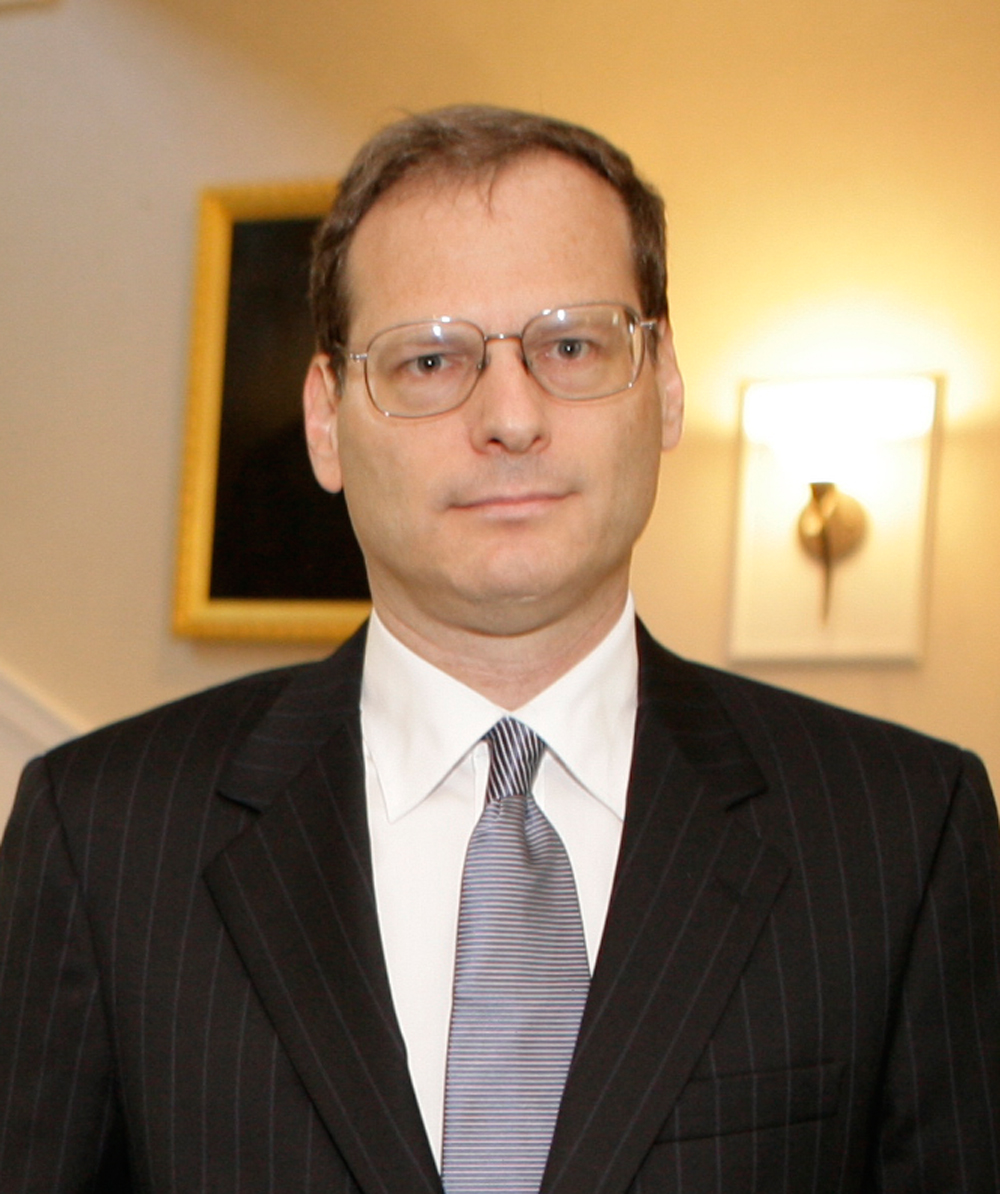Want to put your own stamp on your Galaxy S25? 3 One UI 7 tweaks to try right now
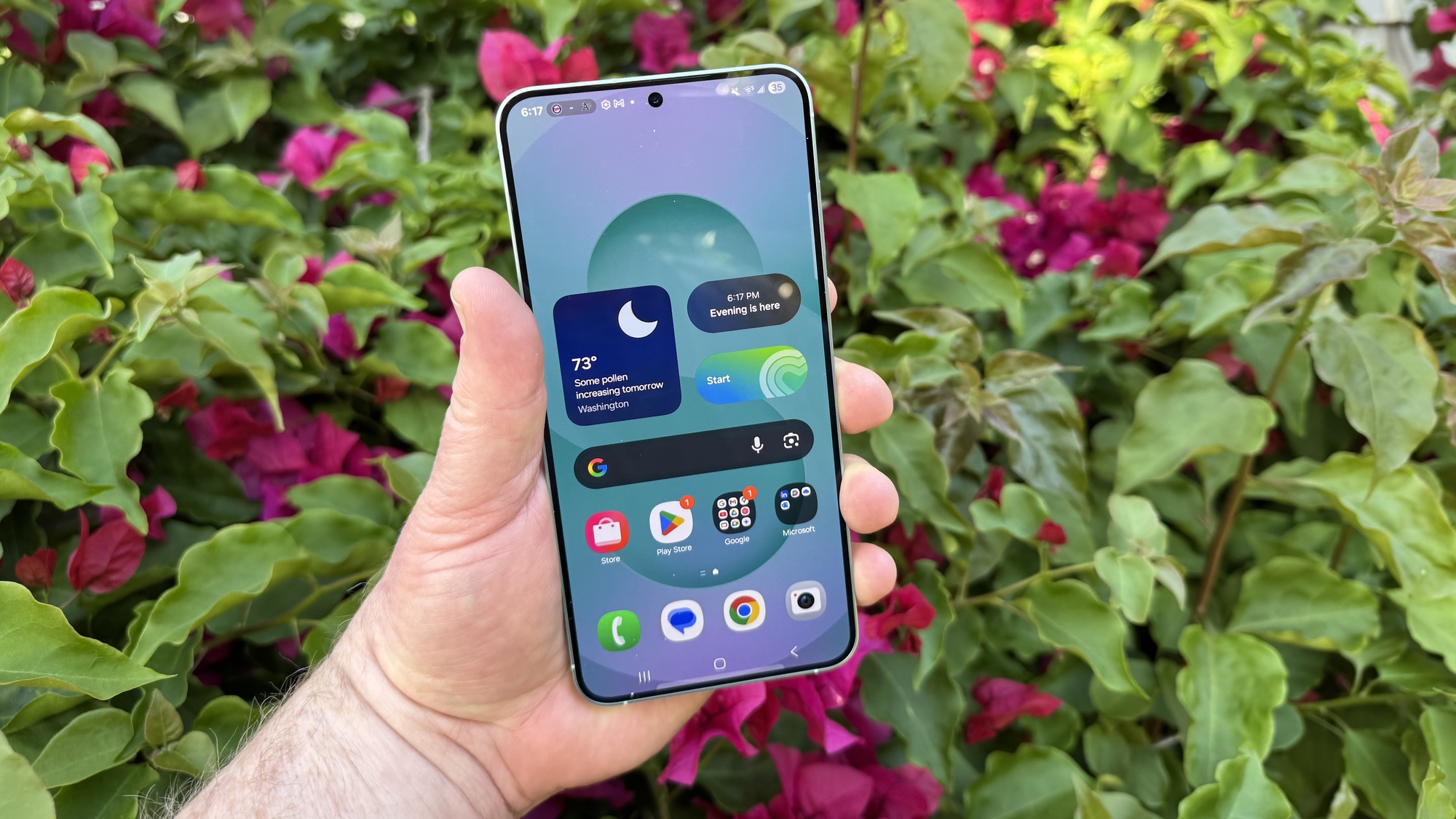
Android 15 may be a powerful mobile operating system, providing all the modern features and a purposeful appearance you could want. But if you own one of the best Samsung phones, you also have an extra layer of software built on to top of Android. The current version is called One UI 7, and it offers a more visual approach to mobile computing with a simplified home screen, new lock screen and redesigned widgets.
One UI 7 brings some new features specifically to the Galaxy S25 family in the form of a Now Brief that welcomes you in the morning, updates you with vital information during the day and wishes you a good night at bedtime.
The Galaxy S25 models shipped with One UI 7 on board, and the software update has subsequently rolled out to other recent Samsung phones, including last year’s Galaxy S24. In fact, many of these One UI 7 tricks I’m about to share also work for phones that date back to the S21 series as well as Z Flip, Z Fold, Galaxy A family and many Tab S tablets. You’ll find more information on Samsung’s One UI 7 page.
My advice to fine-tune One UI 7 on your Galaxy phone starts with customizing the battery icon and making the Home Screen’s taskbar appear or disappear. Galaxy S25 owners can also make the new Now Bar feature do what you want it to — or disappear.
In other words, One UI 7 is your ticket to getting your device to look and act just the way you want it to so that using your phone becomes second nature. Here’s how to pull off each tweak.
Change the battery icon in One UI 7
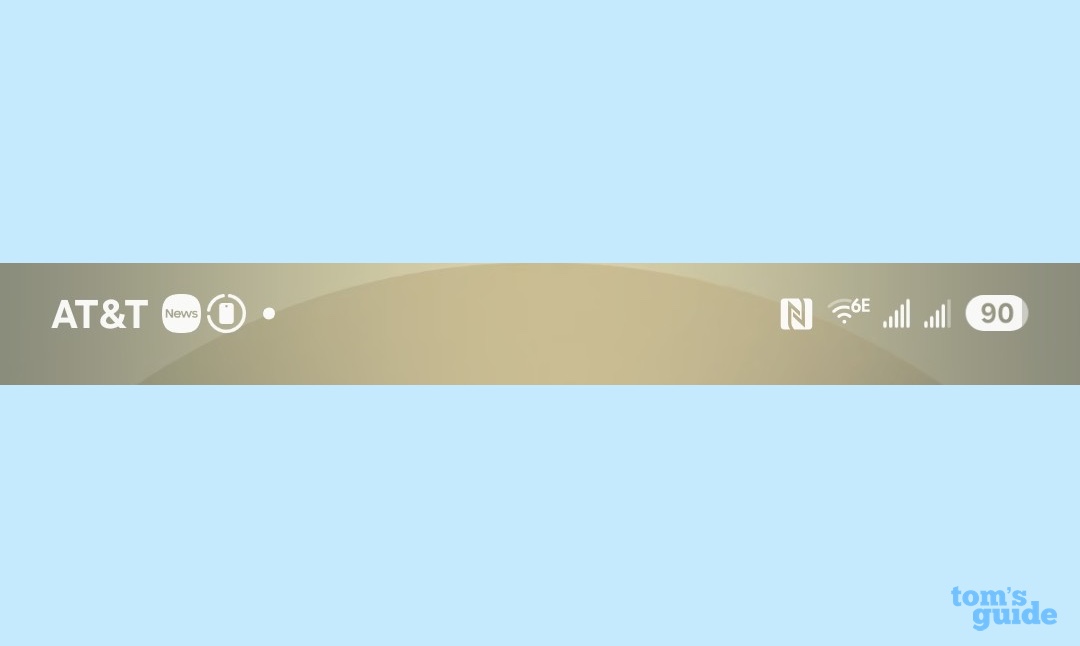
Love it or hate it, you can’t deny that the new One UI 7 pill-shaped battery icon in the screen’s upper right is controversial. It shows the percent of the battery’s remaining capacity numerically on top of a horizontal bar graph, but for some, it takes up too much valuable home screen real estate. Others think it’s hard to read at a glance.
Either way, here’s how to replace it with your own.
1. Use Good Lock to disable the current icon
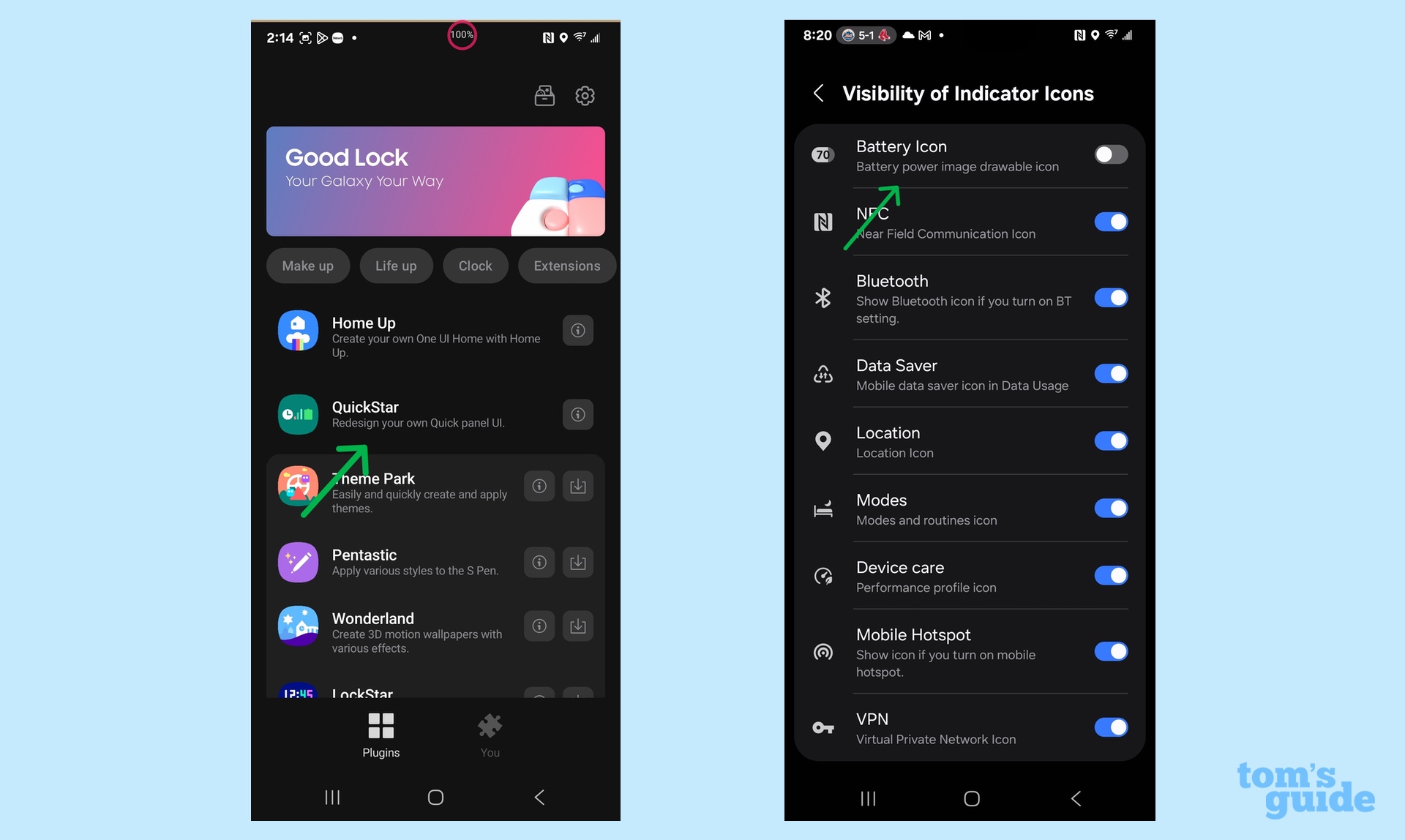
To get rid of the battery gauge start with getting and installing Samsung’s Good Lock app at the Play Store. It offers lots of customization options, but I’m concentrating on the QuickStar portion. Start by tapping on QuickStar’s Visibility of Indicator Icons near the top and then on Battery Icon. The gauge goes bye-bye. Argument over.
2. Customize the icon
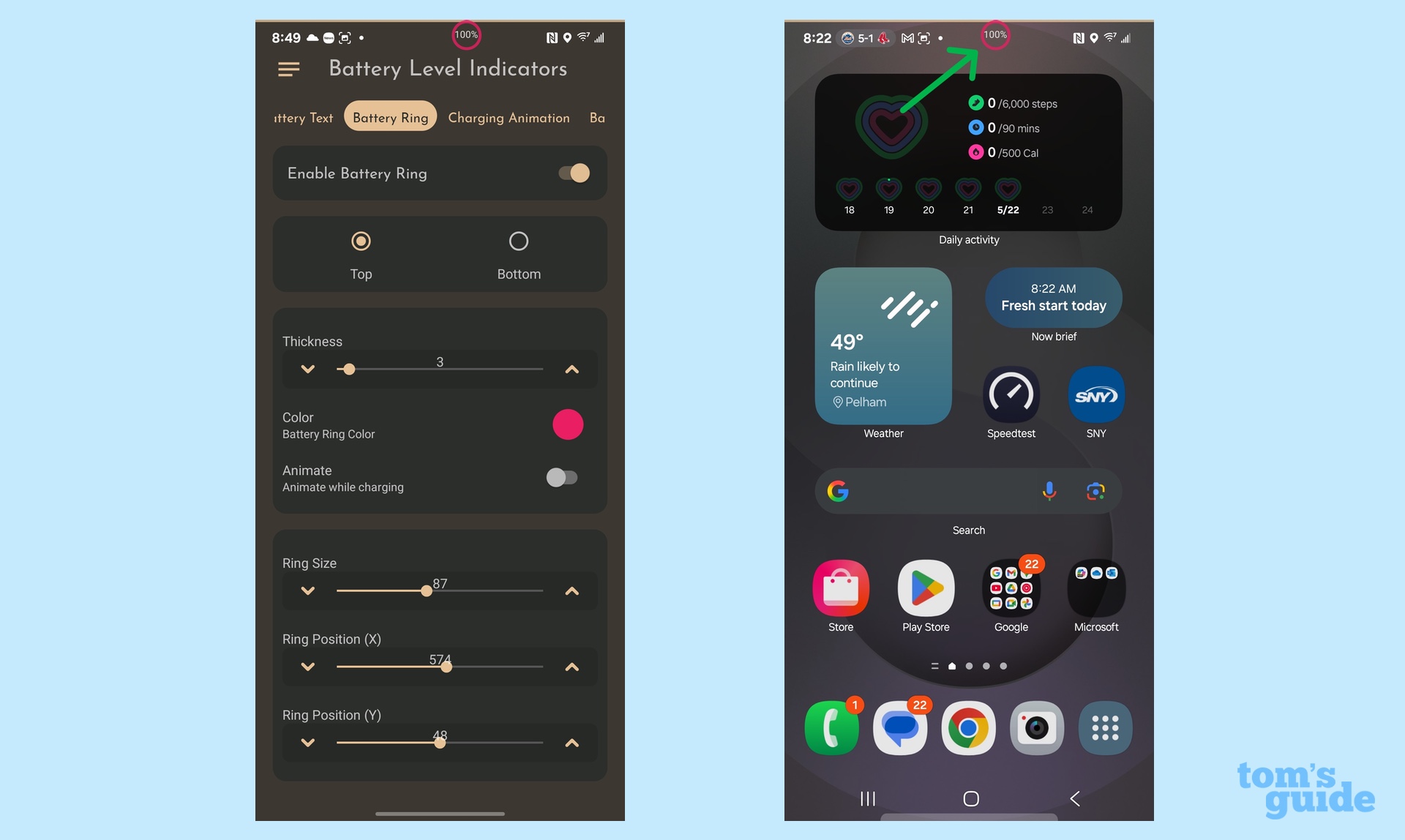
If I stop there, I don’t have a way to see the battery’s status. So it’s back to the Play Store to download Yogesh Dama’s Battery Bar – Power Lines app. (While free, I pay 99 cents to rid myself of the ads in the app’s premium version, which also unlocks several other features.)
Activate Battery Bar’s Battery Ring Circle Graph to return a battery status icon to your home screen. You can then tweak the look. I picked a bright red color and added the numeric text inside. It took a little playing with the sizing and positioning sliders, but the new gauge sits at the top next to the camera’s eye.
Now, my battery’s level is easy to read and the graph doesn’t take up too much space.
Get instant access to breaking news, the hottest reviews, great deals and helpful tips.
Get the Home Screen taskbar back in One UI 7
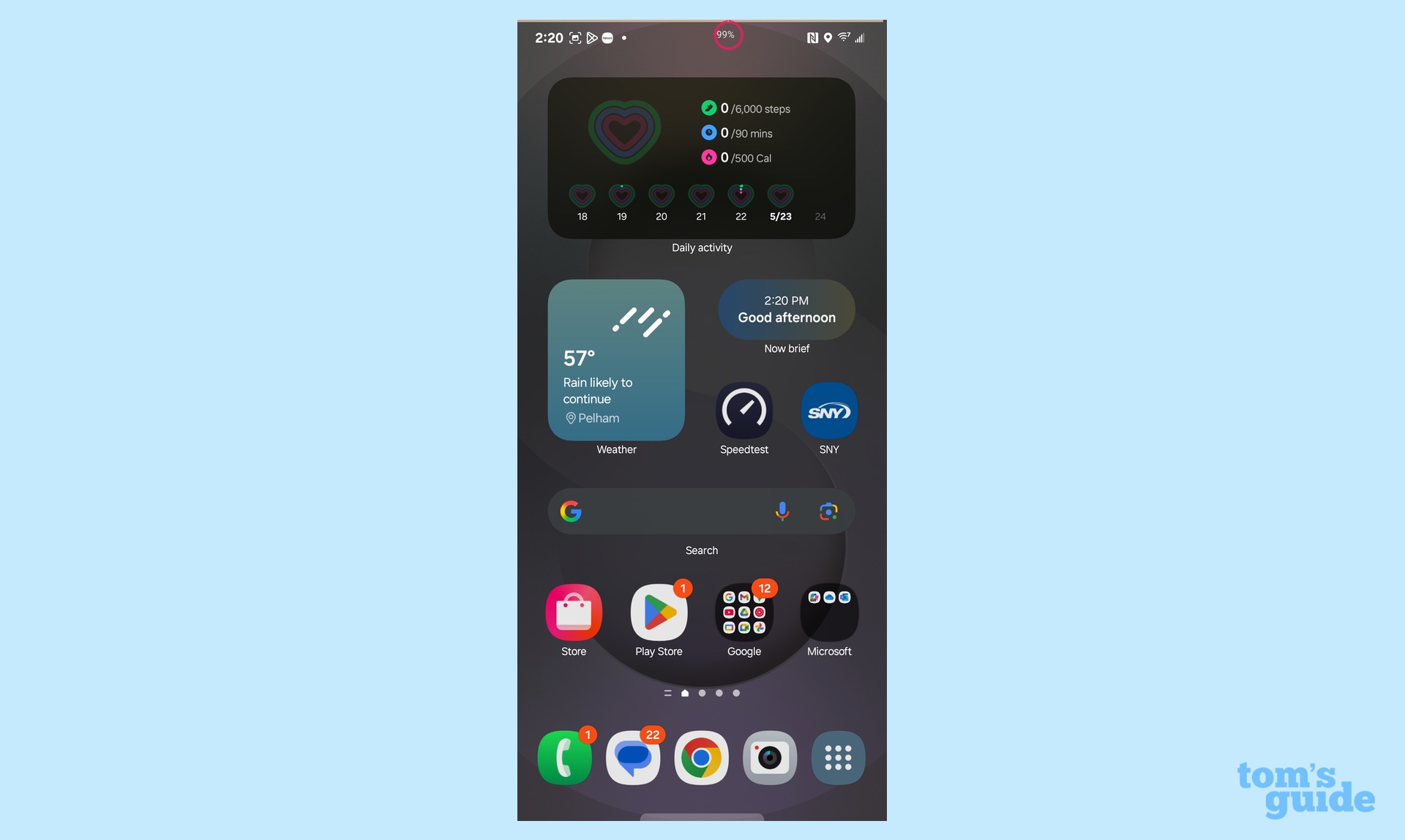
Regardless of which Samsung device you’re using, the One UI 7 interface has lost the taskbar at the bottom, It lets you quickly go forward, back or open the recent apps page.
The taskbar is still there, it’s just hidden under the surface. Here’s how to bring it back.
1. Change the Navigation Bar settings

Go to the Display section of Settings, and tap on Navigation Bar. Here, you’ll get the choice of having the taskbar emerge after a swipe or remain fixed in sight permanently . I chose the buttons and now the three icons are back.
2. Customize the taksbar

Go a step deeper and it’s easy to change the order buttons appear in on the Navigation Bar. Now they will always be ready for me to use.
Get the Now Bar
For Galaxy S25 users, One UI 7’s most visible new feature is the Now Bar that puts a lozenge at the bottom of the screen to bring things both important (like news items) and trivial (like wishing you a good day) to your attention.
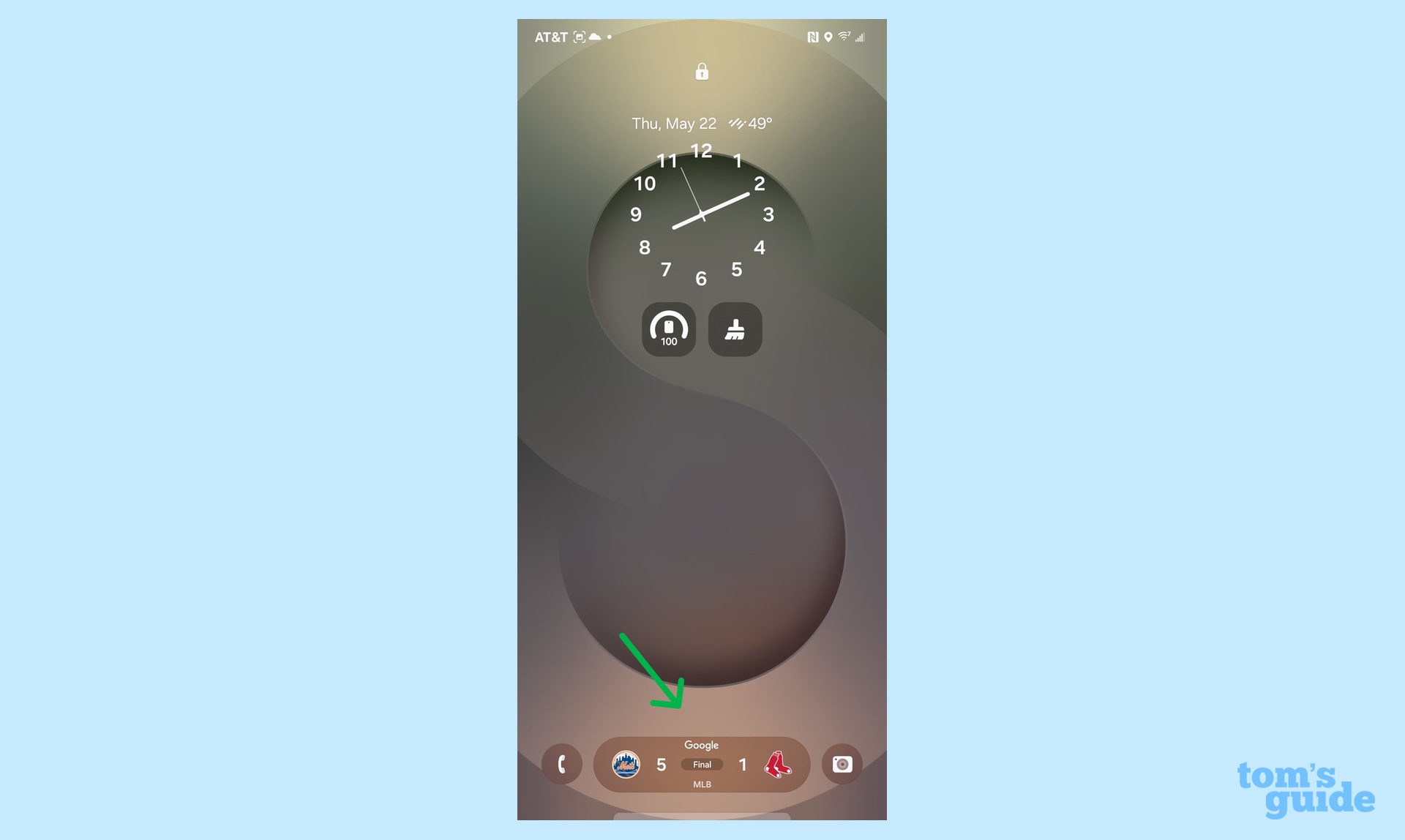
It can be the weather, the Media Player or any of 7 other items. Among other things, I set the Now Bar to show what’s going on with the N.Y. Mets.
1. Remove the Now Bar
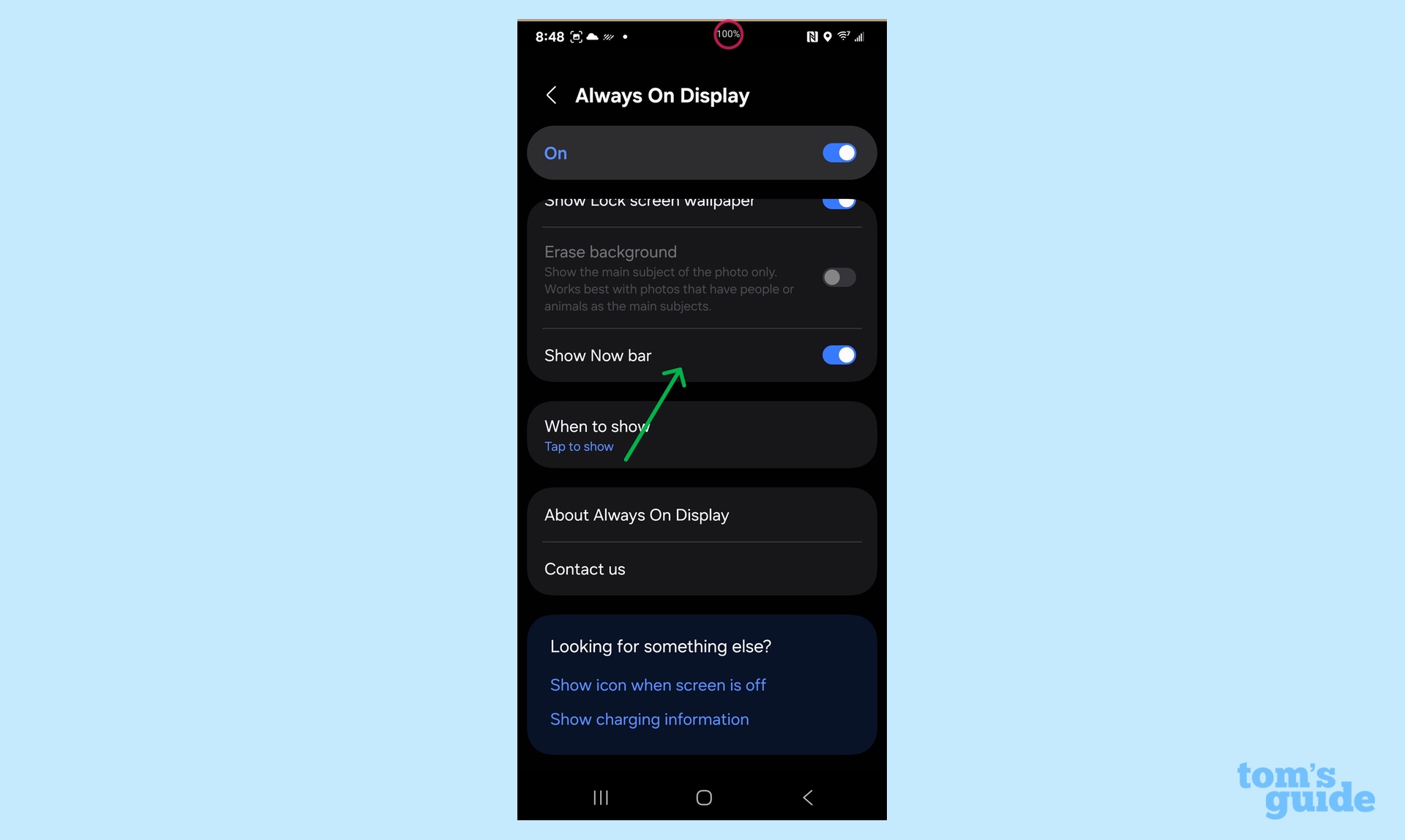
If the Now Bar proves annoying, it can be gotten rid of by going to the Lock screen and Always on Display section of the Settings menu and tapping on the Always On Display. Turn it off at the Show Now bar line.
2. Customize the Now Bar
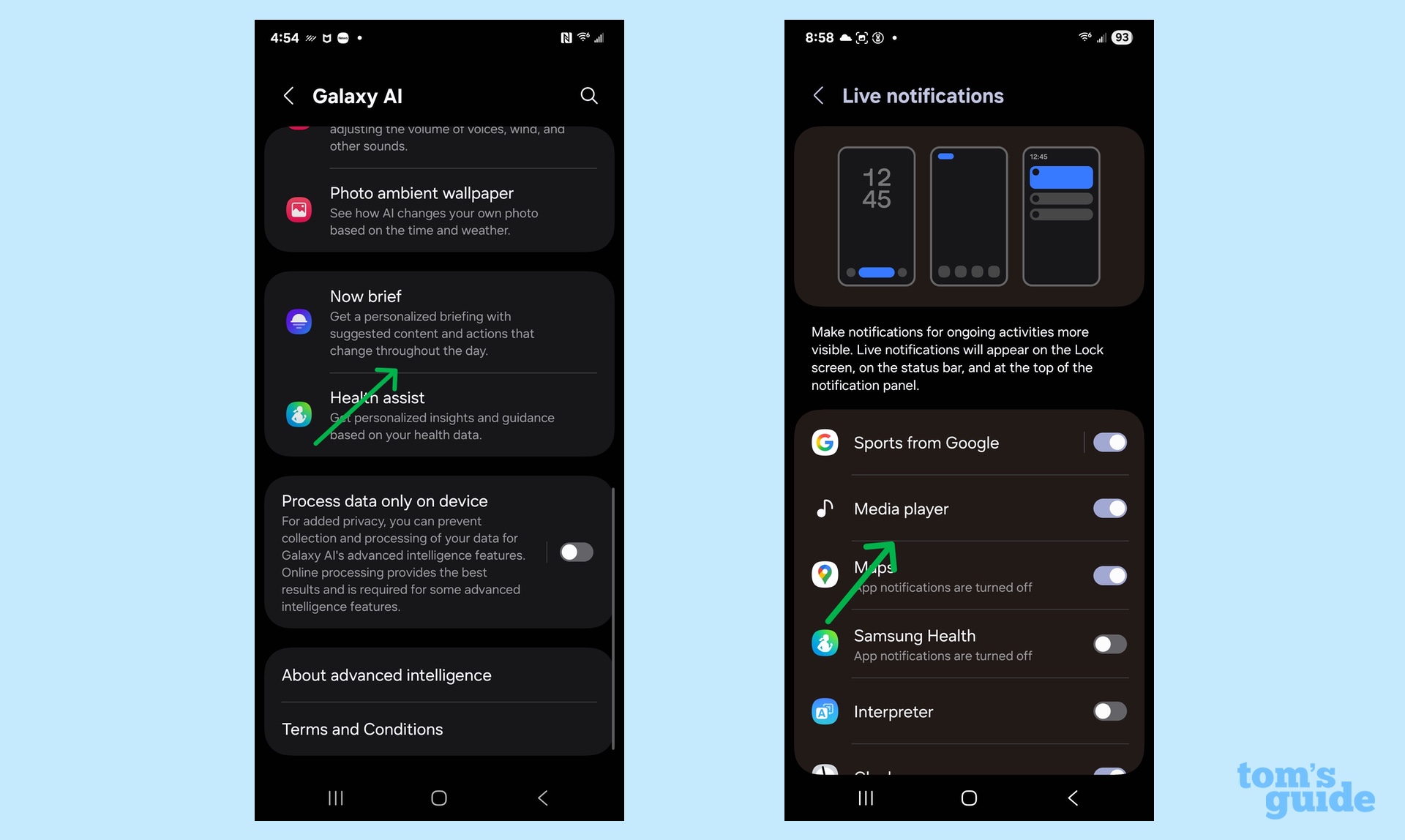
It would be a shame to ditch the Now Bar, though, because it can do a lot. At the Galaxy AI portion of the Settings menu, go to the Now Brief section to tap on Content. Here, I pick and choose the Now Bar’s coverage areas, like adding the Media Player.
3. Customize the Now Brief
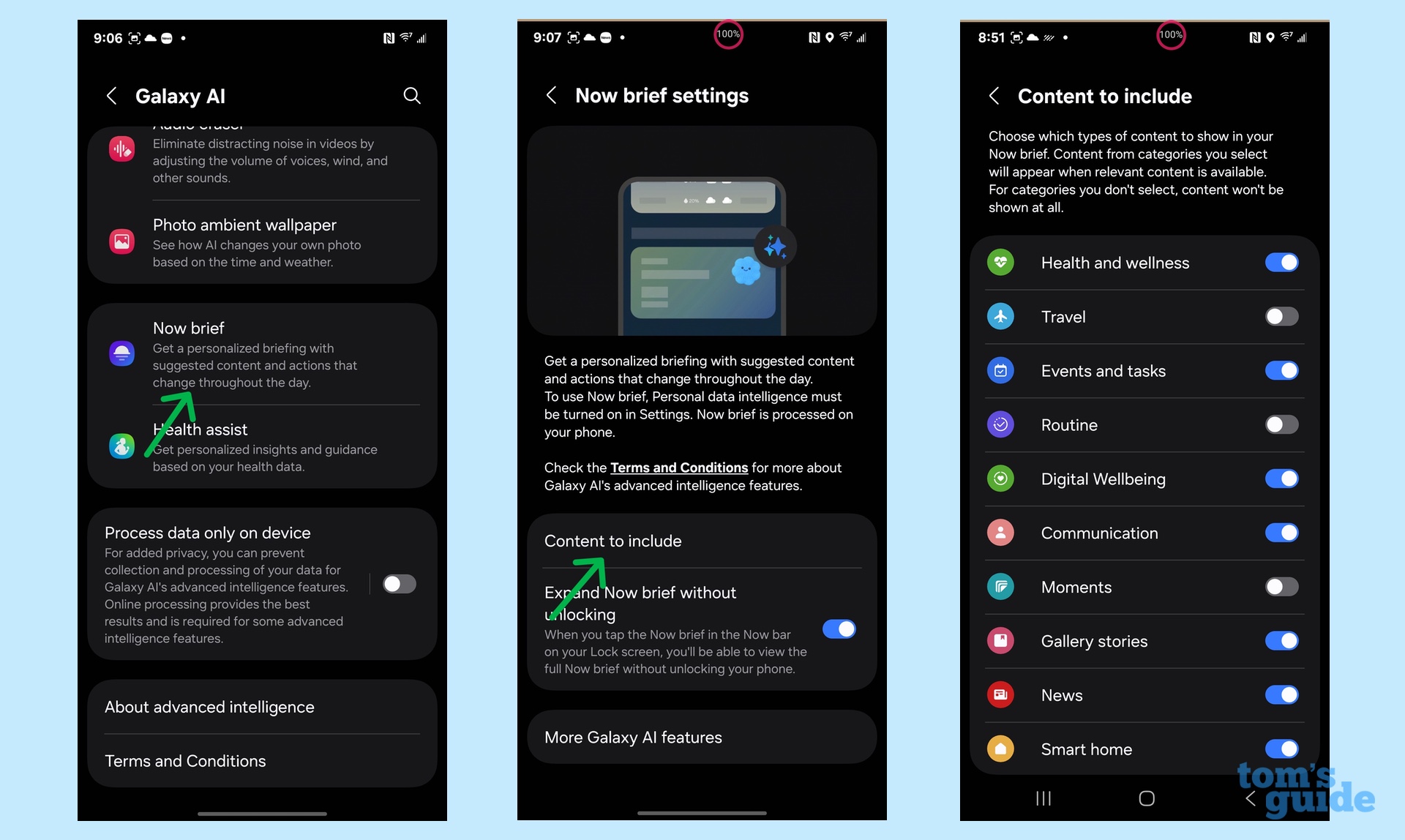
Speaking of the Now Brief, it can also provide a variety of information. Go back to the Settings Galaxy AI section, and open Now Brief. Tap on Content to include the areas you want to be stay informed about. Be careful, it’s an enormous list from news and smart home to health and wellness as well as YouTube shorts.
4. Bring the Now Bar to the lock screen
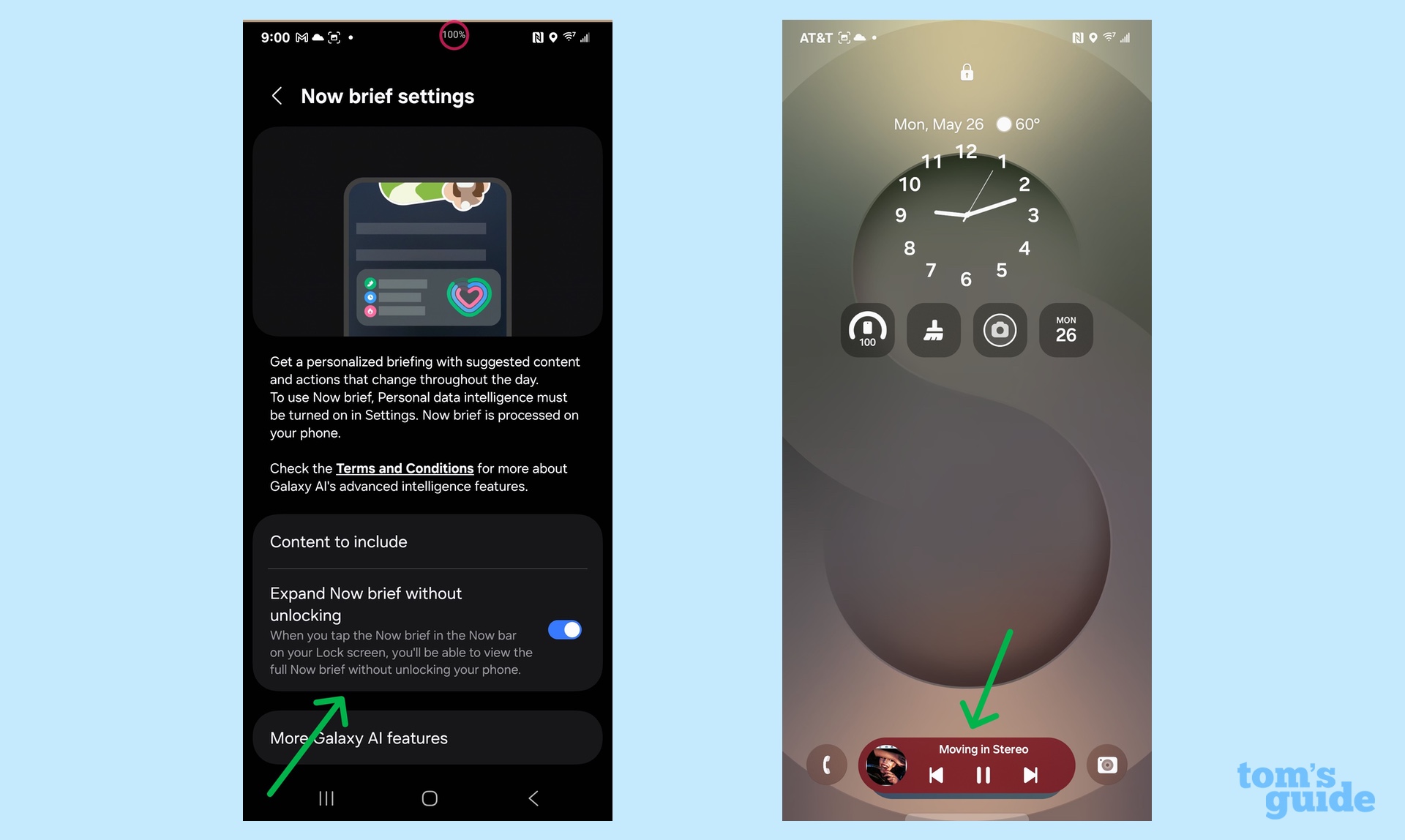
Finally, it’s easy to set the phone to open the Now bar even if the phone is locked. On the Galaxy AI Now brief page, activate the Expand Now Brief Without Unlocking button. Now, when I listen to Spotify, the media controls are accessible from the lock screen.
More to come with One UI 8
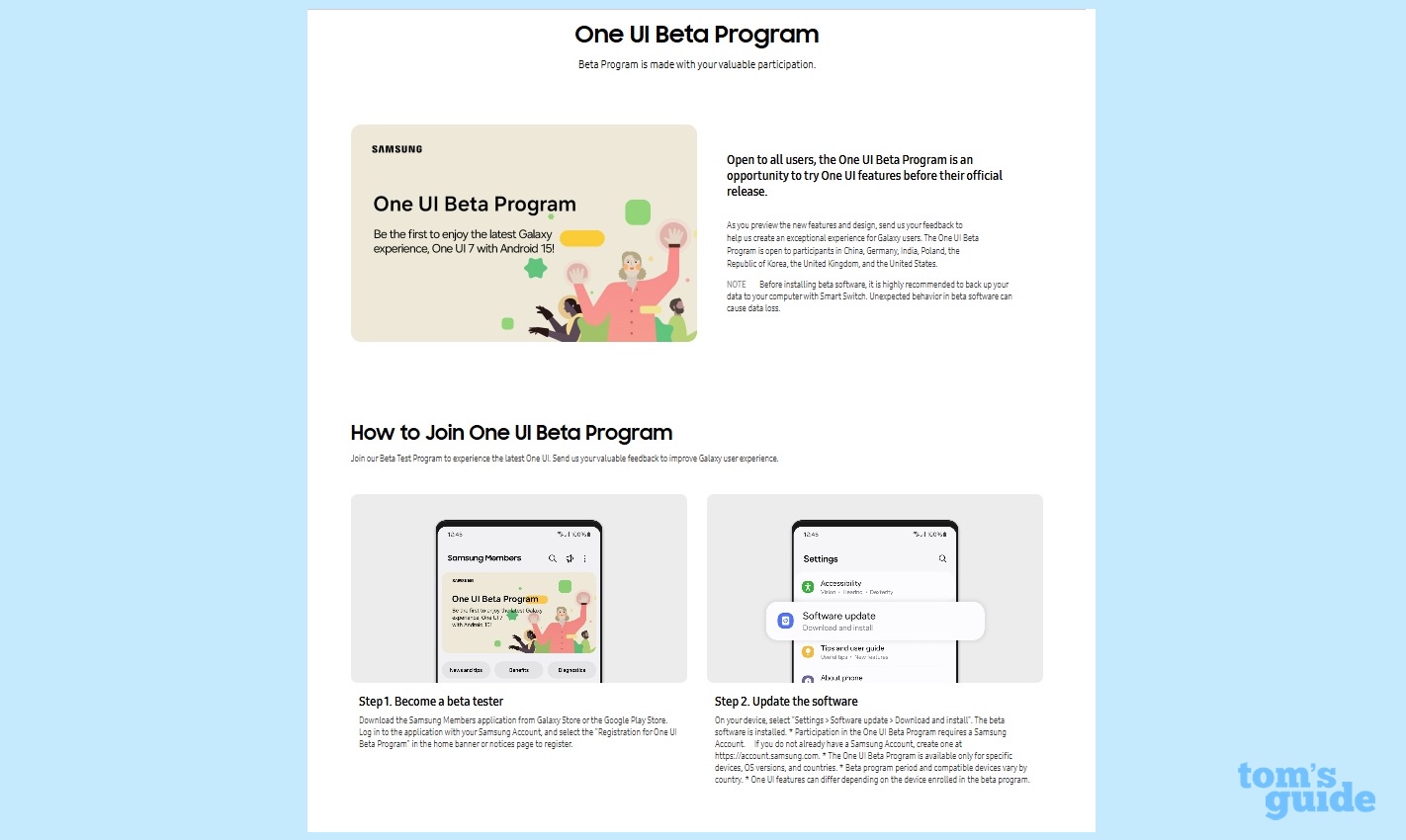
If the One UI 7 isn’t powerful enough, feel free to take a look at the One UI 8 beta, which is based on Android 16. Samsung’s beta software is pretty stable, but I suggest backing the phone up first.
Open to anyone with a Samsung account and a Galaxy S25 model in China, Germany, India, Poland, Korea, England or the U.S., One UI 8 promises to take customization to another level. The easiest way to play is to open the Samsung Members app and tap on Beta Program at the bottom to join. Don’t worry if it says there’re no beta programs available at the moment. Check back later.
More from Tom's Guide
- One UI 8 beta just made the Now Bar a lot more useful — here's how
- Samsung exec shuts down the Galaxy S25 Edge haters, talks triple foldable
- Send money in a tap — Samsung Wallet just got a game-changing upgrade
Brian Nadel is a freelance writer and editor who specializes in technology reporting and reviewing. He works out of the suburban New York City area and has covered topics from nuclear power plants and Wi-Fi routers to cars and tablets. The former editor-in-chief of Mobile Computing and Communications, Nadel is the recipient of the TransPacific Writing Award.
You must confirm your public display name before commenting
Please logout and then login again, you will then be prompted to enter your display name.
